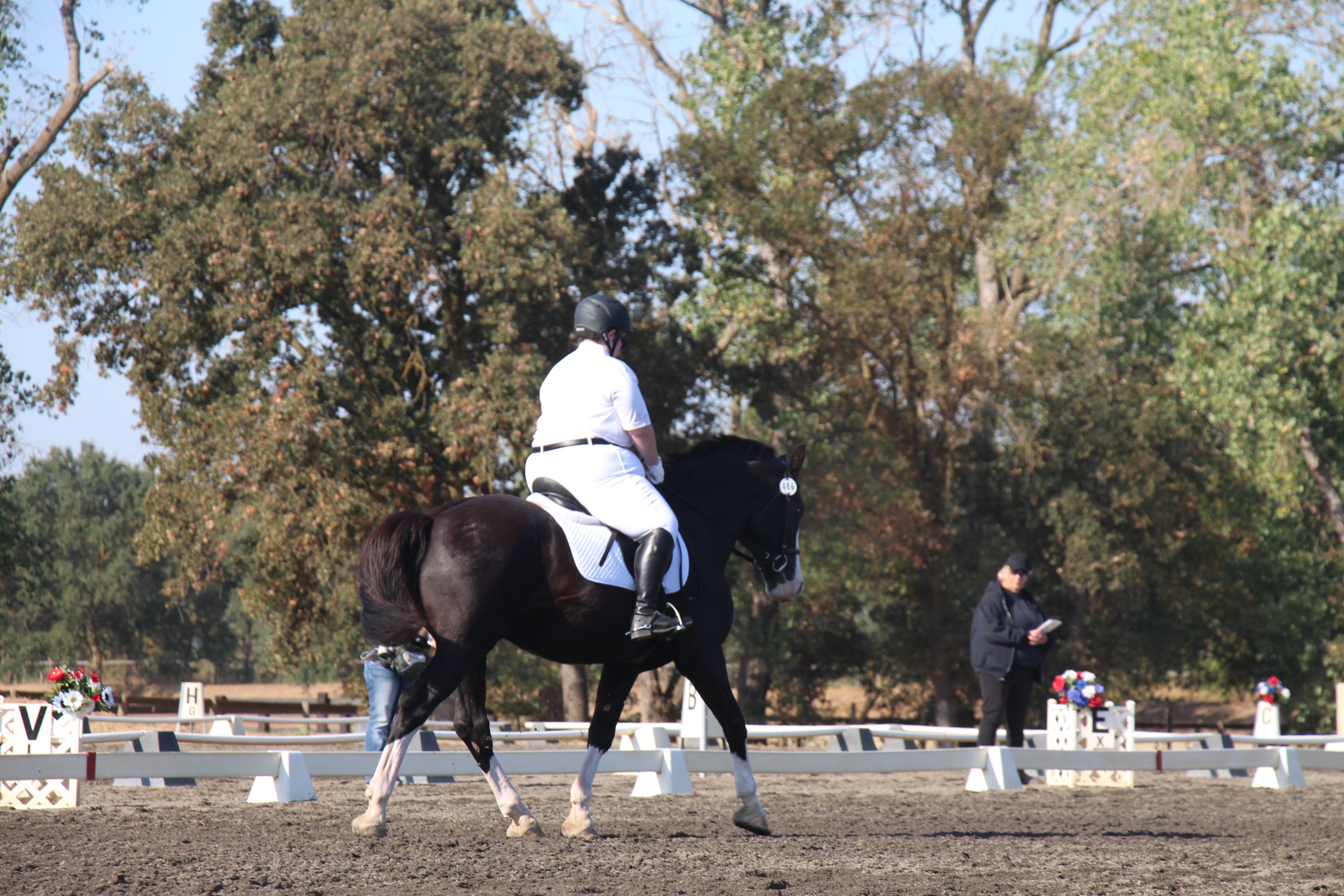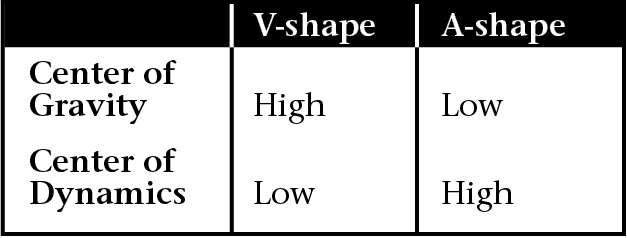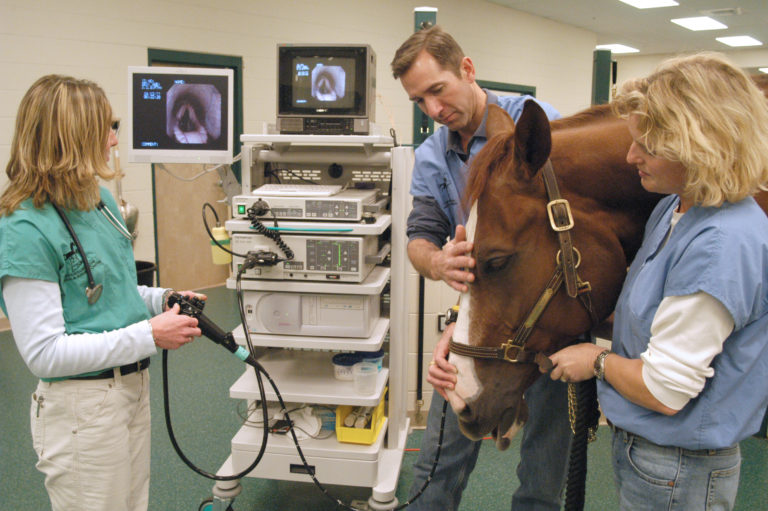
(Credit: Sheryl Shelton)
This picture is of Katherine Shelton and her senior draft-cross gelding that she rescued. Katherine is an amateur rider and is photographed here at her first schooling show at Introductory Level.
The angle of this picture shows the size of both horse and rider and it shows some harmony between them, too. They look focused on their test and are clearly demonstrating what they have achieved together. Riding is one of the few sports where you can see a variety of body types performing well. I can imagine how much it meant for Katherine to rescue this horse, train together and head out to show! For this I give her a lot of credit.
While the saddle looks like it fits the horse well, it does look small on Katherine. Her compromise is to make it best for the horse first. The horse looks in good condition and seems to work happy and content in a nice frame and contact.
Katherine is sitting balanced and quiet and appears to ride with the highest concentration. Her leg position shows some outside rotation, which might be due to the shape of her leg. Riders with short and round thighs might have a very hard time staying supple in their hips when rotating the leg further in. I notice that she is slightly looking down and sitting a tiny bit forward as if to sit lighter on her horse. This might also be because she is perhaps in the sitting moment of the rising trot.
When analyzing riders’ balance, I often compare two different shapes of upper body. When I look at a rider from behind, some look like a “V” with a narrow pelvis and broad shoulder, others look more like an “A” with narrow shoulders and a broad pelvis. Katherine belongs to the second group.
In terms of balance, it is important to understand what that means. It is a challenge to balance a V shape. In contrast, the A-shaped body has a much more secure balance, and that often makes horses feel more secure. When the balance is steady, even the weight of a plus-size rider is less disturbing than the weight of a rider who is unbalanced and insecure.
Now imagine how the horse will feel a shift of weight. A V-shaped rider will have to move only a tiny bit to the side and the horse will feel the change. But an A-shaped rider will have to move much more to have the same effect and influence on the horse.
In my studies of physiotherapy, I learned to pay special attention to the body’s diagonals. If you draw a diagonal line between shoulders and hips, these diagonals resemble our diagonally structured muscles, and all our movements are organized in sync with these body diagonals. If you look at photographs from all different sports you can see many of those diagonal movements.
When drawing these diagonals into a body, they cross at a very important point. I call it the dynamic center of the body. This center is not equivalent to the gravitational center of the body.
Applying this to the A- and V-shape riders shows:

What does that mean for riding? To be able to use correct seat and weight aids and influence the horse, the two centers need to connect and work together.
For Katherine it means that if she moves only her upper body, she moves her dynamic area but there will be no shift of weight that the horse can feel. Only when she actively connects the muscles from her upper body with her pelvis can she influence the horse.
A V-shaped rider may move much more in the pelvis and midsection of the body and be unable to give precise aids (because of instability in the midsection) until she learns to connect the higher gravity center with the movement below.
The image that Katherine needs to keep in mind is to ride thinking that she wants to stretch up from her pelvis, connect her gravity center with the dynamic center and broaden her shoulders as much as possible. Then she can get her messages across to the horse with more lightness and suppleness. This may allow her to open her hip joints easier and improve her leg position. I wish Katherine and her horse enjoyment in future rides together. Understanding the pros and cons of functional anatomy will help. Then the riding can become a healthy sport for both of them!
Susanne von Dietze is a leader in equestrian biomechanics. A physiotherapist, licensed Trainer A instructor and judge for dressage and show jumping, she gives lectures and seminars throughout the world, including at the prestigious German Riding Academy in Warendorf. She is a native of Germany and now lives with her husband and three children in Israel, where she competes at the international level. She is the author of two books on the biomechanics of riding: Balance in Movement and Horse and Rider, Back to Back. Find her books at www.EquineNetworkStore.com.











